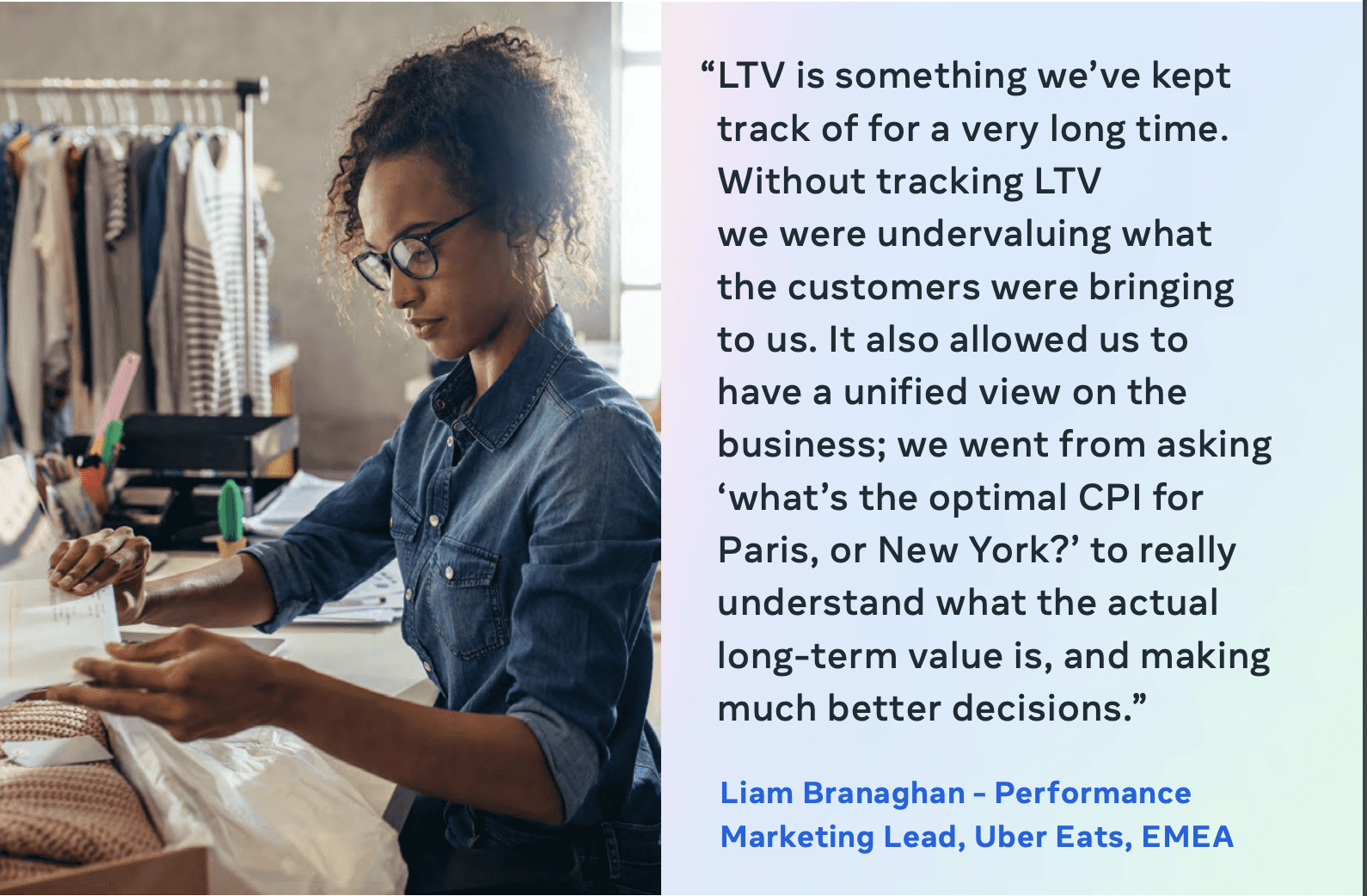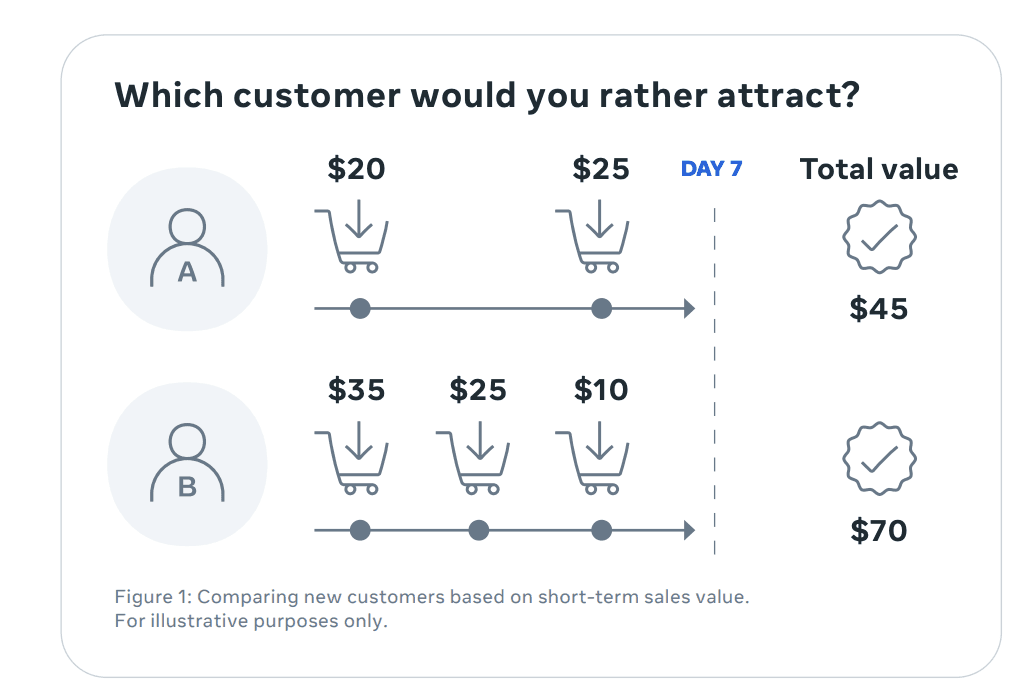Here's why Rule-based retargeting strategies are holding back your campaign performance
Here's why Rule-based retargeting strategies are holding back your campaign performance
Here's why Rule-based retargeting strategies are holding back your campaign performance
Predictive LTV based retargeting is the game changer for boosting ROAS in Retargeting campaigns.
Predictive LTV based retargeting is the game changer for boosting ROAS in Retargeting campaigns.
Predictive LTV based retargeting is the game changer for boosting ROAS in Retargeting campaigns.



In the world of digital marketing, retargeting campaigns are a staple strategy. Brands use these campaigns to re-engage users who have previously interacted with their website or app but did not complete a desired action, such as making a purchase.
The goal is simple: bring these users back and convert them into customers. But while traditional retargeting methods have been effective, they come with limitations. Enter Predictive Lifetime Value (PLTV) – a powerful, advanced strategy that promises to revolutionize retargeting campaigns and boost return on ad spend (ROAS).
The Basics of Retargeting Campaigns
Most marketers are familiar with retargeting. It involves serving ads to users who have already shown interest in your brand. For example, if someone visits your website and browses a product but leaves without buying, you can show them targeted ads to remind them of that product and nudge them toward making a purchase. This is typically done through rule-based targeting strategies.
The Current Norm: Rule-Based Retargeting
Rule-based retargeting is the standard approach. It involves creating specific rules based on user actions to target those who show potential interest but have not yet converted. Here are a couple of common strategies:
Single Event-Based Retargeting
Example: Time Spent on Website
Rule: Target users who have spent a significant amount of time on the website, indicating interest but no action taken.
Implementation: Set up an audience in Meta Ads Manager that includes users who have spent a certain amount of time (e.g., top 25% or 50%) on your website.
Example: Add to Cart
Rule: Target users who have added items to their cart but have not completed the purchase.
Implementation: Create a Custom Audience based on the "Add to Cart" event tracked by your Meta pixel.
Combination of Events-Based Retargeting
Example: Time Spent + Add to Cart
Rule: Target users who have both spent significant time on the website and added items to their cart.
Implementation: Combine audiences by setting conditions such as "Time spent on site in the 80th percentile and above" and "Add to Cart > 0".
While these methods are a good starting point, they come with significant limitations.
The Limitations of Rule-Based Heuristics
Rule-based heuristics for retargeting campaigns, while useful, have several limitations:
Static Criteria: Rule-based segmentation relies on fixed rules that do not adapt to changes in user behavior over time. This means that as user behavior evolves, the rules become outdated and less effective.
Focus on Immediate Actions: These strategies primarily focus on immediate user actions, such as page visits or cart additions, without considering the broader context of user behavior over time. This narrow focus can miss the bigger picture of a user's intent.
Inability to Identify Deeper Correlations: Rule-based methods cannot find deeper correlations between various user actions that might indicate high intent. For example, a user who frequently visits certain types of product pages but has never added an item to the cart might still be a high-intent user.
Misses High-Intent Customers: Potentially valuable users who do not exhibit specific predefined actions may be overlooked. For example, a user might have a high potential lifetime value but might not fit neatly into any predefined behavioral categories.
Introducing PLTV as the Solution
Predictive Lifetime Value (PLTV) leverages advanced AI models to predict the future value of each customer based on their behavior, demographics, and interactions with your brand. This approach allows marketers to shift their focus from short-term gains to long-term profitability.
What PLTV Is: PLTV is a metric that estimates the total revenue a customer is expected to generate over their entire relationship with a business. It uses machine learning to analyze historical and real-time data to make these predictions.
Why Businesses Need to Adopt PLTV for Targeting: Adopting PLTV strategies helps in identifying and targeting high-value customers, ensuring that marketing budgets are spent more effectively and driving higher returns on ad spend (ROAS).

Example →
Short Term View (Day 7)

In the image above, you see two customers.
Customer A: Spends $20 initially and then another $25 within a week, totaling $45.
Customer B: Spends $35 initially, then $25, and another $10 within the same period, totaling $70.
From a short-term perspective, Customer B appears more valuable.
Long-Term View (Day 30)

Over a longer period:
Customer A: Continues to make purchases, spending $20, $25, $25, and another $25, totaling $120.
Customer B: Makes fewer additional purchases, only adding $20, $25, and $10, totaling $70.
From a long-term perspective, Customer A proves to be more valuable.
Conclusion:
This example highlights why businesses need PLTV models. Initially, Customer B seemed more valuable based on immediate purchases. However, over time, Customer A's loyalty and consistent spending made them the higher-value customer. PLTV helps predict such scenarios, allowing marketers to prioritize long-term value over short-term gains.
How Toplyne enables marketing teams to use PLTV strategies for targeting
Toplyne helps marketing teams, both big and small, to connect their first-party data of visitors on their website/product and leverage it to drive higher ROAS on ad campaigns. With Toplyne, integrating data and utilizing predictive AI models becomes seamless, enabling effective PLTV-based targeting without the complexity of building and maintaining these systems in-house.
In the world of digital marketing, retargeting campaigns are a staple strategy. Brands use these campaigns to re-engage users who have previously interacted with their website or app but did not complete a desired action, such as making a purchase.
The goal is simple: bring these users back and convert them into customers. But while traditional retargeting methods have been effective, they come with limitations. Enter Predictive Lifetime Value (PLTV) – a powerful, advanced strategy that promises to revolutionize retargeting campaigns and boost return on ad spend (ROAS).
The Basics of Retargeting Campaigns
Most marketers are familiar with retargeting. It involves serving ads to users who have already shown interest in your brand. For example, if someone visits your website and browses a product but leaves without buying, you can show them targeted ads to remind them of that product and nudge them toward making a purchase. This is typically done through rule-based targeting strategies.
The Current Norm: Rule-Based Retargeting
Rule-based retargeting is the standard approach. It involves creating specific rules based on user actions to target those who show potential interest but have not yet converted. Here are a couple of common strategies:
Single Event-Based Retargeting
Example: Time Spent on Website
Rule: Target users who have spent a significant amount of time on the website, indicating interest but no action taken.
Implementation: Set up an audience in Meta Ads Manager that includes users who have spent a certain amount of time (e.g., top 25% or 50%) on your website.
Example: Add to Cart
Rule: Target users who have added items to their cart but have not completed the purchase.
Implementation: Create a Custom Audience based on the "Add to Cart" event tracked by your Meta pixel.
Combination of Events-Based Retargeting
Example: Time Spent + Add to Cart
Rule: Target users who have both spent significant time on the website and added items to their cart.
Implementation: Combine audiences by setting conditions such as "Time spent on site in the 80th percentile and above" and "Add to Cart > 0".
While these methods are a good starting point, they come with significant limitations.
The Limitations of Rule-Based Heuristics
Rule-based heuristics for retargeting campaigns, while useful, have several limitations:
Static Criteria: Rule-based segmentation relies on fixed rules that do not adapt to changes in user behavior over time. This means that as user behavior evolves, the rules become outdated and less effective.
Focus on Immediate Actions: These strategies primarily focus on immediate user actions, such as page visits or cart additions, without considering the broader context of user behavior over time. This narrow focus can miss the bigger picture of a user's intent.
Inability to Identify Deeper Correlations: Rule-based methods cannot find deeper correlations between various user actions that might indicate high intent. For example, a user who frequently visits certain types of product pages but has never added an item to the cart might still be a high-intent user.
Misses High-Intent Customers: Potentially valuable users who do not exhibit specific predefined actions may be overlooked. For example, a user might have a high potential lifetime value but might not fit neatly into any predefined behavioral categories.
Introducing PLTV as the Solution
Predictive Lifetime Value (PLTV) leverages advanced AI models to predict the future value of each customer based on their behavior, demographics, and interactions with your brand. This approach allows marketers to shift their focus from short-term gains to long-term profitability.
What PLTV Is: PLTV is a metric that estimates the total revenue a customer is expected to generate over their entire relationship with a business. It uses machine learning to analyze historical and real-time data to make these predictions.
Why Businesses Need to Adopt PLTV for Targeting: Adopting PLTV strategies helps in identifying and targeting high-value customers, ensuring that marketing budgets are spent more effectively and driving higher returns on ad spend (ROAS).

Example →
Short Term View (Day 7)

In the image above, you see two customers.
Customer A: Spends $20 initially and then another $25 within a week, totaling $45.
Customer B: Spends $35 initially, then $25, and another $10 within the same period, totaling $70.
From a short-term perspective, Customer B appears more valuable.
Long-Term View (Day 30)

Over a longer period:
Customer A: Continues to make purchases, spending $20, $25, $25, and another $25, totaling $120.
Customer B: Makes fewer additional purchases, only adding $20, $25, and $10, totaling $70.
From a long-term perspective, Customer A proves to be more valuable.
Conclusion:
This example highlights why businesses need PLTV models. Initially, Customer B seemed more valuable based on immediate purchases. However, over time, Customer A's loyalty and consistent spending made them the higher-value customer. PLTV helps predict such scenarios, allowing marketers to prioritize long-term value over short-term gains.
How Toplyne enables marketing teams to use PLTV strategies for targeting
Toplyne helps marketing teams, both big and small, to connect their first-party data of visitors on their website/product and leverage it to drive higher ROAS on ad campaigns. With Toplyne, integrating data and utilizing predictive AI models becomes seamless, enabling effective PLTV-based targeting without the complexity of building and maintaining these systems in-house.
Related Articles




Generative AI: And the winner is...
Predicting who takes home the generative AI crown (and how)




Propensity Models in Sales: What You Need to Know
The only guide you'll need to understand what propensity models are in sales, the types of propensity models, their use cases, and how to implement them.




Lead Grading Essentials: The B2B Sales Guide
The only guide you'll need to understand lead grading essentials.
Copyright © Toplyne Labs PTE Ltd. 2024
Copyright © Toplyne Labs PTE Ltd. 2024
Copyright © Toplyne Labs PTE Ltd. 2024
Copyright © Toplyne Labs PTE Ltd. 2024